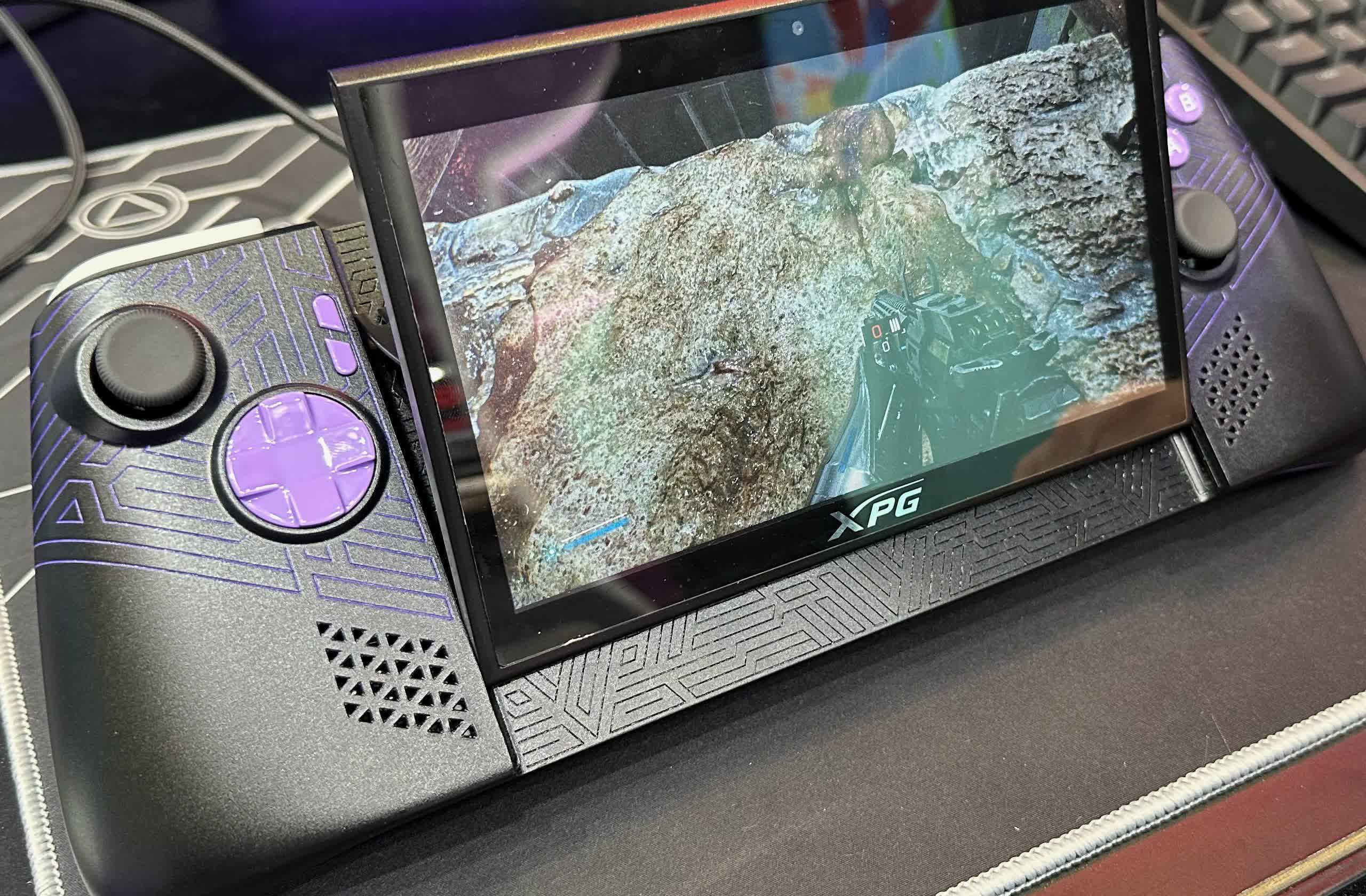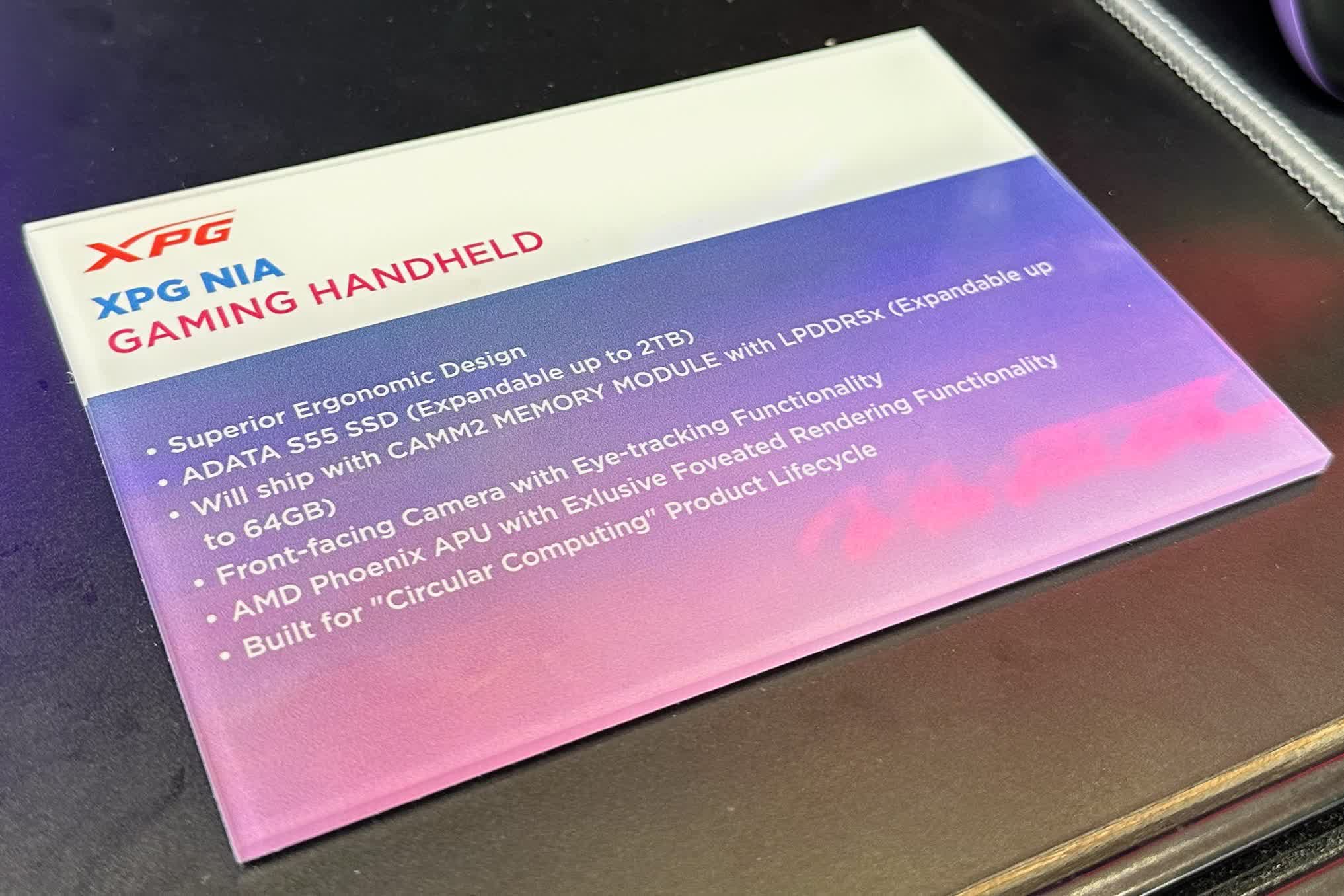Forward-looking: Multiple new handheld gaming PCs have emerged at Computex, confirming that the new form factor is a rising trend. However, most of them include highly similar hardware and features. Adata's prototype device aims to stand out from the pack with a few unique quirks.

Adata showcased the XPG Nia at Computex this year, one of a few handheld gaming PCs with demo stands at the event. Unlike Asus, MSI, and Zotec competitors, Adata's machine tries to conserve precious horsepower through foveated rendering.
Typically used in VR headsets like the PlayStation VR2, foveated rendering employs eye tracking to determine precisely where on the screen the player is looking and renders only that area at full resolution. The rest of the display – which should be in the user's peripheral vision – is cut to a lower resolution to improve overall performance.
The Nia's eye tracking works through a front-facing camera above the screen, but using the technique on a handheld system could prove quite different from a headset. Virtual reality lenses are very close to the eye, so a significant portion of the display is in the user's peripheral vision.
Conversely, low-resolution areas might be more noticeable on a small handheld screen held further away from the face. Although Nia's screen resolution remains unclear, it's likely to render significantly fewer pixels than most headsets, so the potential performance benefit from foveated rendering could be much lower, even with the Nia's adjustable screen positioning.

Regardless of whether the prototype feature makes it into the launch unit, the Nia has another unique trick that could extend its longevity – upgradeable memory. The device supports up to 64GB of LPCAMM2 LPDDR5X RAM that users can swap without a service call. The CAMM2 units are more compact than traditional SODIMMs, making thempotentially useful for laptops and handhelds.
The Nia features an AMD Zen 4 Phoenix APU, similar to the other portables besides MSI's Intel-powered Claw, which received a Lunar Lake revision announced at Computex. Asus upgraded the battery, RAM, and other components of the ROG Ally, and Zotac unveiled its handheld – called the Zone. Interestingly, Asus, MSI, and Zotac enhanced the USB-C connections on their devices to facilitate DisplayPort outputs and compatibility with external GPUs.
The XPG slated Nia for a 2025 launch. It has yet to reveal pricing.
Image credit: AnandTech
XPG's upcoming handheld gaming PC features eye-tracked foveated rendering and swappable DRAM